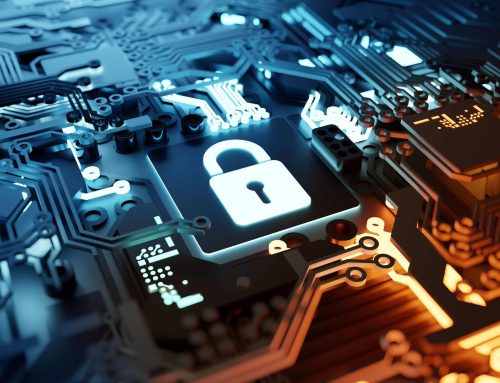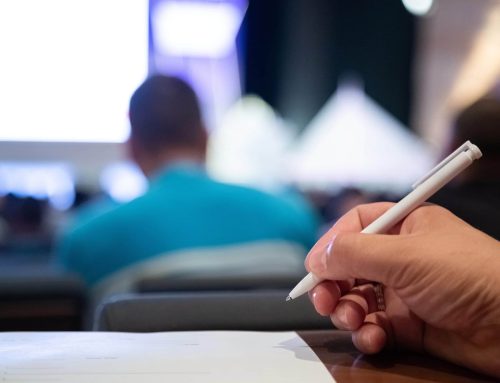Threats to an organization’s security and intellectual property have emerged as a major challenge. These threats, which can cause companies to lose significant amounts of money and competitive advantages, can come from the inside, the outside, or from unknown origins.
Due to the advancements in cell phone and tablet technologies, these insider/outsider threats enable people to record the targeted data on a phone and send it out of the facility via Wi-Fi or over a cellular network. Once the perpetrators have completed their transmissions, they can merely erase them from their devices without worrying they’ll be discovered.
The insider threat is particularly worrisome. The U.S. government has spent considerable amounts of money and time to secure its classified operations. However, it remains very vulnerable to insider threat, even with this hefty investment in security.
In a 2013 report from the Office of the Director of National Intelligence, they reported that out of 39 departments and agencies, including the Defense, Justice, and Homeland Security Departments, 44% of them have fallen short of the minimum standards needed for an effective insider threat program.

Organizations are sometimes even encouraging their employees to use their own cell phones for business use, which results in increasing threats to data security. Ominously, employees will link their cell phones to organization networks. The risks involved include:
- Connecting to unsecured wireless networks
- Downloading and installing unapproved apps
- Viewing potential malicious websites
- Leaving the cell phone unattended
These risks plus the accidental loss of the cell phone pose very grave threats to medium-sized business data. Rooster malware can take control of Android devices and their functions once it has been installed on a mobile device. This gives cyber criminals remote access to affected devices. Once the device is connected to it, It also grants access to the Small and Medium-Sized Business (SMB’s) network.
One very effective way of countering the danger from cell phones is to electronically monitor the environment of interest so cell phone transmissions can be detected and stopped by security. The cell phone detector technology is delineated in this article.
What is a Cell Phone Detector, Exactly?
The cell phone detector is a technological device that detects the presence of cell phones in an area or within a stipulated range of operation. Once this cell phone detector discovers the existence of a cell phone, the alert system raises the alarm and instructs the mobile phone user to switch it off. The cell phone detector has different ways of alerting the user of the phone.
It can do this by giving off a visual or voice alert in that vicinity alert message, or by silently logging all detected activity.
The operator of the cell phone detector can load a prerecorded voice message that will be played on detection of a cell phone. This is an excellent way to prevent the use of cell phones in sites of worship, examination halls, private rooms, theatres, and other sensitive areas. The employment of the cell phone detector is also one of the methods of managing cell phones in the classroom or workplace.
The cell phone detectors are usually small wall or ceiling mounted devices, but also can be portable. They can sense the presence of an activated mobile phone from a distance of just a couple of feet up to one hundred and fifty feet. The cell phone detectors can not only discover mobile devices that are in the conversation mode alone, but they can also be used for those cell phones that are in standby mode or those that are simply turned on.
Because it is not always possible to check every person entering sensitive places like libraries, worship places, or any strategic site, the use of a cell phone detector is of critical importance in these areas.. They can also be used as rescue devices.
A cell phone detector is also useful for detecting the use of mobile phones for spying and unauthorized video transmission. The illegal use of cell phones is a growing and dangerous problem in correctional institutions worldwide. They are a significant threat to prison security and circumvent the monitoring processes while assisting inmates in committing new crimes both inside and outside the facility.

How Cell Phone Detector Technology Works
As cell phone technology has advanced, so too has cell phone detector technology. These devices have been engineered to very high standards providing excellent detection accuracy with virtually zero false positives.
Signal Detection vs Signal Jamming
Cell phone detectors are able to detect an RF (Radio Frequency) transmission signal, similar to what a radio might pick up over the air. The moment the RF transmission signal from an activated cell phone is detected, the LED light starts blinking and it begins making a beeping alarm sound. This alarm continues until the mobile phone is located and turned off or until the RF transmission signal ceases. It is not suitable to use an ordinary RF detector that is employing tuned LC circuits for detecting signals present in the GHz frequency band, which are used in cell phones.
While cell phone detectors simply sense the presence of a mobile phone, a mobile phone jammer actually prevents its use – even if it is just switched on – by overpowering any network signals. Mobile phone jammers are devices that give off signals in a frequency that are in a similar range that cell phones employ, successfully obstructing the communication by creating powerful interference. When the cell phone comes within the range of the jammer, it loses its signal from the base station or cell phone tower. The cell phone will simply show “no reception strength” or “no service”.
It is important to note that while cell phone detection is legal in the United States (and many other countries), cell phone signal jamming is illegal.

When a cell phone is active, it transmits the signal in the form of a sine wave that passes through the air. The encoded audio/video signal contains electromagnetic radiation that is picked up by the receiver in the base station. The transmitter power of the modern 2G antenna in the base station is 20 to 100 watts.
The cell phone transmits short signals at regular intervals to register its availability to the most proximate base station. The most critical environmental factor is the distance to the cellular base station. Usually, the nearer a cellular phone is to a base station or transmitting tower, the weaker the signal needs to be coming from the phone.
The range of frequencies of different categories are 1) AM radio frequencies between 180 kHz and 1.6MHz, 2) FM radio frequencies between 88 to 180 MHz, and 3) television frequencies between 470 to 854MHz. Waves at higher frequencies but within the RF region are called microwaves. Cell phones employ a high-frequency RF wave in the microwave region that carries a large amount of electromagnetic energy.
Block Diagram and Working of Cell Phone Detectors
The following is a simple diagram of a simple cell phone detector. This obviously does not employ any complex circuitry that may be used in the most modern cell phone detectors that are in use today.
The circuit employs a 0.22μF disk capacitor to capture the RF signals from the cell phone. This part should function like an antenna, so the capacitor is arranged like a mini loop aerial. With this arrangement, the capacitor works like an air core with the ability to oscillate and discharge current. The output of the transistor is within 10 mV of either supply voltage terminal.
The lead inductance acts as a transmission line that intercepts the signals from the cell phone. An ordinary RF detector using tuned LC circuits is not suitable for detecting signals in the GHz frequency band used in mobile phones. That is why more complex circuitry detecting gigahertz signals is required for a cell phone detector that may be in use today, and able to detect signals from 20Mhz to 6Ghz.
Op-amp is used in the circuit to act as a comparator. It can come with MOSFET inputs and bipolar output. The input contains MOSFET transistors to provide very high input impedance and very low input current. It possesses a high speed of performance which is suitable for a low input current application. This results in a very low input current and a very high speed of performance. It is used in applications such as ground-referenced single-supply amplifiers, fast sample hold amplifiers, and long-duration timers.

IC-555 is a very stable controller that is capable of producing accurate timing pulses. With the monostable operation, the time delay is controlled by one external resistor and one capacitor. With a stable operation, the frequency and duty cycle are accurately controlled by two external resistors and one capacitor. These are used in applications like precision timing, pulse generation, and time-delay generation.
One lead of the capacitor receives DC from the positive rail and the other lead goes to the negative input of IC1. So the capacitor receives energy for storage. This energy is applied to the inputs of IC1 so the inputs of IC1 are almost balanced with 1.4 volts. In this state, the output is zero.
- However, at any time, IC can release a high output if a small current is induced to its inputs. When the cell phone radiates due to high-energy pulsations, the capacitor oscillates and releases energy.
- When the mobile phone signal is detected, the output of U1 becomes high and low alternately according to the frequency of the signal. This triggers a mono-stable timer U2 through.
- When the TR pin of 555timer goes low, then pin3 of the timer becomes high. When pin3 is high, the buzzer will ring.
- You may use a short telescopic-type antenna. The unit will give a warning indication if someone uses a cell phone within a radius of 1.5 meters.
- Again, the capabilities of this simple cell phone detector are very limited in frequency and range of detection.
Cell Phone Detector Capabilities
A top-quality cell phone detector scans for cell phones and user-selectable RF transmissions. They have become capable of detecting cell phones in all countries in standby, texts, and data and call modes. They can also discern all protocols including 2G, 3G, 4G, LTE, 5G, GSM, CDMA, Wifi, and Bluetooth enabled products, in addition to two-way radios, and even bugging devices.
These devices have a detection radius that can be easily adjusted for small rooms or for larger spaces.
Another excellent feature of cell phone detectors is that they can be coupled with software that can enable users to view alert locations on an interactive map of the facility or use the interactive graph feature to easily identify problem areas and trends.
Cell Phone Detectors in Action
Cell phone detectors provide protection from cell phones in virtually every industry. This includes:
- Sensitive government and military buildings
- Government SCIF’s (Sensitive compartmented information facility)
- Prisons and other correctional facilities
- Casinos and gaming centers
- Warehousing and other retail spaces
- Classrooms and examination rooms
- Call centers
- Intellectual property
- Food production and preparation
- Mines
- Ports
- Courtrooms
- Aerospace
- Manufacturing Facilities
Ideal Places and Situations for Cell Phone Detectors
Detecting cell phones and transmission devices in Sensitive Compartmented Information Facility (SCIF), government buildings, and embassies is of critical importance. A SCIF is a U.S. Department of Defense term for a secure room or data center. These rooms guard against electronic surveillance and suppress data leakage of sensitive security and military information.
This is a paramount concern because current cell phones are multi-tasking devices that can send text messages, take pictures, and even record or stream audio or video. Unfortunately, their sophisticated features and small size make them a very effective espionage tool that can be employed to record and steal classified information.

These detectors have another very useful function in eliminating contraband cell phones in prisons and other correctional facilities. With a cell phone detector, prison guards or staff will be alerted to unauthorized phones on the premises. This not only helps maintain the security of the site, but also helps to keep inmates and personnel inside safe from outside threats and influences. Actionable Intelligence can be gained from the monitoring of certain areas where contraband cell phones may be present and used by inmates.
Another important function of cell phone detectors is detecting hidden transmission devices in casinos and gaming facilities. The introduction of cell phones and miniature cameras provides cheaters with formidable new weapons. Such devices can be used to transmit real-time video that contains information that can give a player an unfair advantage over the house or other players.
Cell phone detectors are able to locate concealed camera transmission devices and alert security staff. This is extremely important because it can go a long way in preventing major financial losses for the house and other customers, and protecting the integrity of table games.
Warehouses and other retail premises can also benefit from cell phone detectors. This can be very useful if an intruder with a cell phone manages to enter your warehouse or retail premises after hours. A detector can be a valuable line of defense for protecting your valuable goods from trespassers.
Remember that detection extends beyond line-of-sight or to the perimeter of the building. This makes the cell phone detector an excellent companion to door and window sensors, and infrared motion detectors.

Intellectual property is another hot issue today’s global economy. A good cell phone detector can secure intellectual property (IP), techniques, and processes and prevent industrial espionage. It can assist you in guarding against covert attempts to gather intelligence about trade secrets and other classified information. This includes the physical layout of the manufacturing processes or the physical layout of research facilities. Design areas in buildings are of particular importance to avoid leaking their most valuable intellectual property.
It is also highly important to protect the integrity of exams, courseware, and testing centers. As we know, some individuals taking tests will try to cheat. In today’s environment, the cell phone is an excellent way to get information into or out of the exam room, either by text or using search engines to look up the required information.
In other cases, it may be important to prevent leakage of the details of the exam or test to protect the examining organization’s proprietary information. To do that requires detecting concealed cell phones in exam rooms and testing facilities. This will help prevent any unauthorized communication to or from the exam or test locations. For instance, to prepare and deploy some professional exams can cost hundreds of thousands of dollars.

Other critical areas where cell phone detectors can be invaluable include:
- Board rooms and lawyers’ offices
- Places of worship
- Courtrooms
- Military bases
- Hospitals
- Theatres
- Conferences
Cell Phone Detectors’ Critical Importance
Today’s sophisticated cell phones are a potential threat to government buildings, some of which hold very sensitive information. They are also a danger in prisons and other correctional facilities, casinos and gaming centers, warehouses, and other retail facilities. Cell phones can be a menace in classrooms holding exams, call centers, and intellectual property.
Fortunately, technology has evolved to where sophisticated cell phone detectors are also on the market. Perhaps not enough of the public is aware of this, which is why the media, including literature, needs to make this information available. Currently, cell phone detectors can discover cell phones in all countries no matter what operational mode they are in (standby, texts, data, and calls). They can also detect a wide variety of protocols. The most advanced cell phone detectors can even be used to identify unknown frequencies transmissions, and be programmed to detect any number of different frequencies.
Cellbusters is certain that our Zone Protector can solve all of your needs with regard to cell phone detection. The Zone Protector is comparable to a mini spectrum analyzer and has the ability to scan frequency ranges defined by the user.
It also has the ability to alert, notify, control a third-party device, or just log as soon as it detects any related transmission activity. Its scope surpasses a traditional cell phone detector as it always scans the environment for any cell phones and user-selectable RF transmissions. The user has complete control over its detection radius, allowing you to adjust it for smaller or larger spaces.
Cellbusters’ other valuable primary product is our Zone Manager which can display visual alerts on an interactive map in your facility when a cell phone is present. It can monitor multiple cell phone detectors at the same time, and give you complete oversight of your entire facility.
Our company proudly offers 100% comprehensive support for its customers and can answer any questions you may have. Cell phone detection is all that we do and we have been leaders in the industry since 1999.






